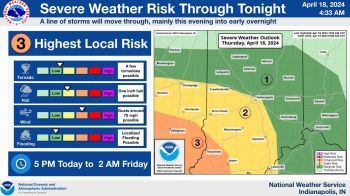FT. WAYNE, Ind.–Each week more Indiana counties are ending up in the red on the state’s COVID dashboard, meaning more people are getting infected. Dr. Scott Stienecker, Medical Director for Infection Prevention, Epidemiology and Stewardship in ft. Wayne explains that Indiana is having another surge in covid cases.
“What are the things that we know effectively work? Masking, social distancing, small groups,” he said, noting that many people are not doing those things, and he believes, according to data, that is causing the surge.
LISTEN: Dr. Scott Stienecker talks COVID surge
“Just take a look at a football game and how many people are wearing masks. How many people are yelling, shouting, cheering, all things that we know create huge amounts of aerosols.”
Stienecker said that people in Indiana are “COVID-fatigued”, done with COVID and that now the state is seeing the result of people abandoning practices that prevent the spread.
He said the relatively low vaccination rate also has something to do with people getting COVID.
“We’ve got counties that are as low as 23 percent vaccinated,” he said.
Stienecker is a believer in both vaccinations and boosters. He said that anyone who has had the vaccine and is eligible for a booster should get one.
“We were seeing approximately 44 percent of our admissions over the age of 65 were previously vaccinated, until boosters started,” he said. “Once we started seeing broad use of the boosters, that dropped down to about ten percent.”
He said the antibodies developed with vaccinations break down over time, making people vulnerable to the disease.
“That antibody steadily declines over time and somewhere between four and six months after your second vaccine you run out of enough gas to prevent the next infection.”
Stienecker said, and you’ve heard it before, that people age 29 and under seem to be driving the surge, getting sick but not realizing it, then passing it on to older people who need to be in the hospital, some even dying. He said vaccinations drastically reduce the need for hospitalizations.













